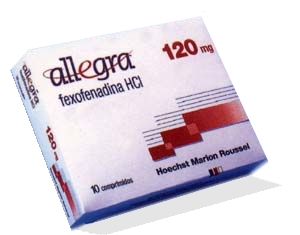ALLERGY AND IMMUNOLOGICAL HYPERSENSITIVITY REACTIONS
The term allergy means hypersensitivity to a physical or chemical agent. Allergy or hypersensitivity is defined as an acquired abnormal hyperimmune reaction to an agent during a second or subsequent occasion. Thus, the previous exposure and the sensitization of the body are essential for allergic reactions.
ALLERGENS
Any substance that produces the manifestations of allergy is called an allergen. It may be an antigen or a protein or any other type of substance. Even physical agents can develop allergy.
The common types of allergens:
1. Food substances: Wheat, egg, milk and chocolate
2. Inhalants: Pollen grains, fungi, dust, smoke, perfumes and disagreeable odor
3. Contactants: Chemical substances, metals, animals and plants
4. Infectious agents: Parasites, bacteria, viruses and fungi
5. Drugs: Aspirin and antibiotics
6. Physical agents: Cold, heat, light, pressure and radiation.
IMMUNOLOGICAL HYPERSENSITIVE REACTIONS
The immunological hypersensitive reactions to an agent give rise to various allergic conditions and autoimmune diseases.
Hypersensitive reactions are classified into five types:
Type I or anaphylactic reactions
Type II or cytotoxic reactions
Type III or antibody mediated reactions
Type IV or cell mediated reactions
Type V or stimulatory /blocking reactions
Type I or Anaphylactic Reactions
Anaphylaxis means exaggerated reactions of the body to an antigen or any other agent to which the body has got sensitized already. It is also called immediate hypersensitive reaction because it develops within few minutes of exposure to an ailergen. Anaphylactic reactions are mediated by IgE and other factors involved in inflammation (inflammation means the protective response of the tissues to the damage or destruction of cells).
When the body is exposed to an allergen, the IgE immunoglobulins are produced. Also called reagins or sensitizing antibodies, these immunoglobulins bind with the surface receptors of mast cells and circulating basophils. Mast cells are the granulated wandering cells found in connective tissue and beneath the mucus membrane in the throat, lungs and eyes.
During the subsequent exposure of the body to the same allergen, the allergen-lgE antibody reaction takes place. This leads to degranulation of mast cells and basophils with the release of some chemical mediators. The chemical mediators produce the hypersensitivity reactions.
Type II or Cytotoxic Reactions
The cytotoxic reactions involve mainly the IgG antibodies, which bind with antigens on the surface of the cells, particularly the blood cells. The affected cells are destroyed. Sometimes IgM and IgA antibodies are also involved. The diseases developed due to cytotoxic reactions are hemolytic diseases of newborn in case of Rh incompatibility and autoimmune hemolytic anemia.
Type III or Antibody Mediated Reactions
Excess amounts of antibodies like IgG or IgM are produced in this type. The antigen-antibody complexes are precipitated and deposited in localized areas like joints causing arthritis, heart causing myocarditis and glomeruli of kidney producing glomerulonephritis.
Type IV or Cell Mediated Reactions
This type of hypersensitivity is also called delayed or slow type of hypersensitivity. It is found in allergic reactions due to the bacteria, viruses and fungi. It is also seen in contact dermatitis caused by chemical allergens and during rejection of transplanted tissues. An example of type IV reaction is the delayed reaction after intradermal injection of tuberculin in persons who are previously affected by tuberculosis (tuberculosis skin test or Mantoux test). The important feature of delayed type of hypersensitivity is the involvement of T lymphocytes rather than the antibodies.
Type V or Stimulatory/Blocking Reactions
It is seen in autoimmune diseases like Graves' disease (stimulatory reactions) and myasthenia gravis (blocking reactions).
Graves' disease: Normally, thyroid stimulating hormone (TSH) combines with surface receptors of thyroid cells and cause synthesis and secretion of thyroid hormones. The secretion of thyroid hormones can be increased by thyroid stimulating antibodies (TSAB) produced by plasma cells (B lymphocytes). The excess secretion of thyroid hormone leads to Graves' disease.
Myasthenia gravis: It is characterized by weakness, easy fatigability and paralysis of skeletal muscles. In some persons IgG autoantibodies are produced which bind with the receptor proteins for acetylcholine in the neuromuscular junction. The acetylcholine released from axon terminal cannot execute the actions due to the preoccupation of the receptors. Therefore, the neuromuscular transmission is inhibited.
 Block your allergy symptoms with one of the leading antihistamines! Allegra is a prescription allergy medication powerfully formulated to give you relief from seasonal allergy symptoms without making you drowsy.
Block your allergy symptoms with one of the leading antihistamines! Allegra is a prescription allergy medication powerfully formulated to give you relief from seasonal allergy symptoms without making you drowsy.